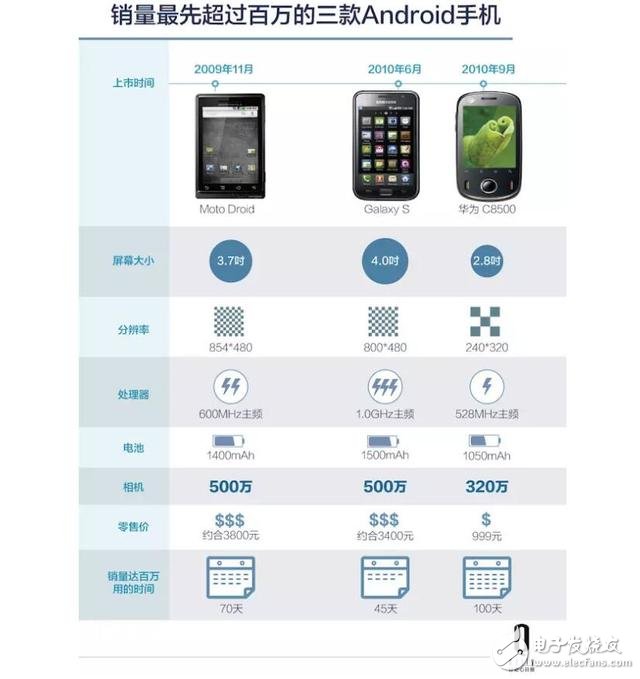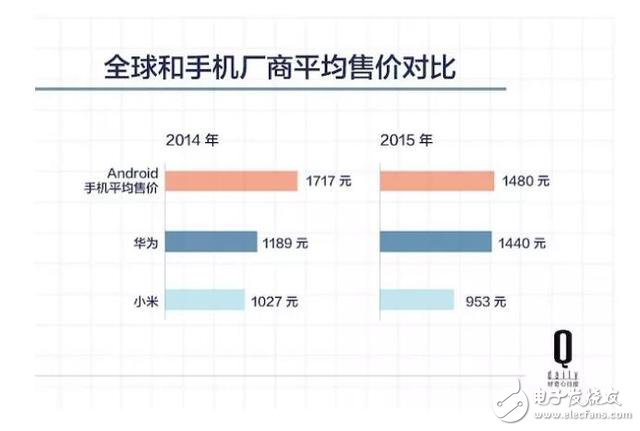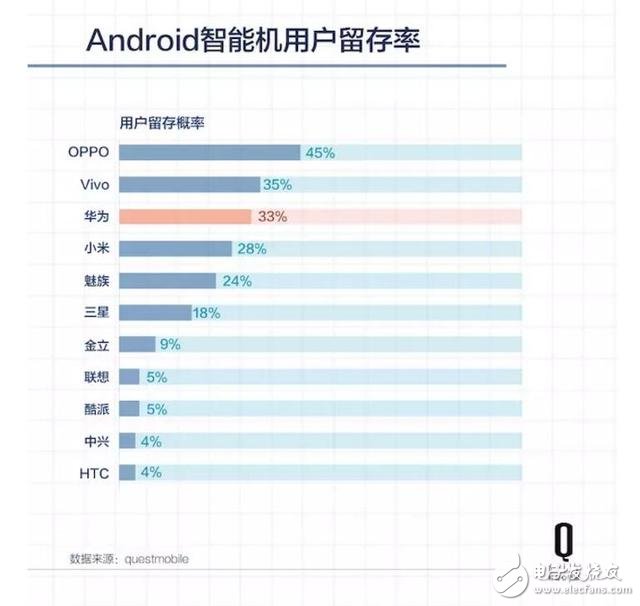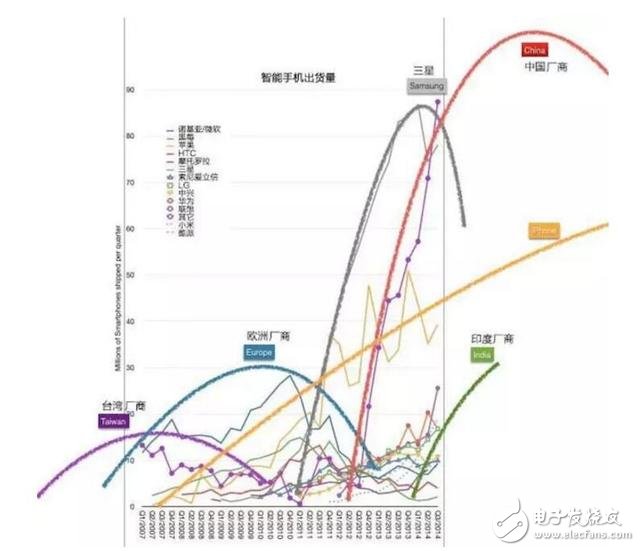2011 is probably the most important year for the Chinese mobile phone industry. In August of that year, Lei Jun (microblogging), which had several ventures and made investments for several years, opened a conference in Beijing and sent a mobile phone called Xiaomi. This is the first product of Xiaomi Company. The outside world is full of doubts about this 1999 mobile phone. But the scene has come to thousands of fans to join, are users who used the millet customization system MIUI earlier. This kind of pull fan promotion conference became more and more common in the next five years, but it was still the first time. Two months before that, the brand OPPO, which was separated from BBK in the early years, invited Leonardo DiCaprio to imitate his image in the blockbuster "The Pirates of the Dream", and played a new mobile phone OPPO around the world. Find the ad. Backgammon's own mobile phone brand, vivo, launched its first smartphone in November 2011. What they have in common is that they all use the Android system and promote their own brands. The company that responded in that year, the most inconspicuous may be Huawei. Also in November, Huawei launched a mobile phone called Glory U8860. Enabling a new brand is an exploration of the business of this large-scale communications equipment company. At that time, Huawei's mobile phones appeared more on the promotional sheets of the business halls of China Telecom and China Unicom, and were crowded with information on returning calls. By December 2013, Glory had become an independent mobile phone brand from a company that worked for operators. Now, when you walk into an offline store, overseas brands outside of Apple have become less and less visible. OPPO and vivo have become the top two in the Chinese mobile phone market. Lenovo and Xiaomi both ranked first in this market and were replaced. But Huawei has become a special existence. Although it has not been the best-selling brand in the Chinese market, relying on overseas business, it is still the third largest mobile phone manufacturer in the world after Samsung and Apple. In the third quarter of this year, Huawei's smartphone business profit reached 200 million US dollars, accounting for 2.4% of the total global smartphone revenue, becoming the most profitable Android mobile phone manufacturer in the world. And ZTE, Coolpad, Lenovo and other mobile phone manufacturers that are doing business with Huawei at the same time have fallen into their own struggles. ZTE’s mobile phone sales in China last year was only 15 million units, far behind Xiaomi, OPPO, vivo and Huawei; Coolpad was acquired by LeTV this year; Lenovo, the mobile phone brand only cut one Motorola. How does Huawei do this? I started doing mobile phones, just working for operators. Huawei's mobile phone business started as a small PHS in 2003. The production difficulty is very low and the profit is quite meager. Because in 2008, Huawei management once wanted to sell the mobile phone business. At the same year, Lenovo sold its mobile phone business (and bought it again the following year). The transfer took place in 2010. At that time, Huawei and China Telecom (microblogging) cooperated to launch the Android mobile phone C8500. According to Huawei at the time, the mobile phone equipped with the Android 2.1 operating system exceeded 1 million in sales within 100 days of domestic sales. In that year, 1 million was a rather remarkable number. The first-generation iPhone, released in June 2007, set a record of one million units in just 74 days. The first ultra-million Android phone was the 2009 Motorola Moto Droid; Samsung did not have its first million-class smartphone, the Galaxy S, until the summer of 2010. But put together, Huawei's C8500 and Motorola, Samsung's "million" new machine is obviously not the same. The screen of Huawei C8500 is less than 3 inches, and the resolution is not as good as that of hundreds of MP4 players. The letter C in the model name is from the communication network standard CDMA of China Telecom. This phone is actually a customized machine produced by Huawei for telecommunications. Around 2010, the Android system's smartphone was just launched. Both Samsung and HTC start from the high end. Operators controlling mobile phone sales are looking for vendors to produce low-cost Android phones. ZTE, Huawei, Coolpad, and Lenovo were the companies with the most cooperation between operators at that time. In this cooperation, operators are absolutely dominant. The requirements are often 4 inches of large screen (which is quite large at the time), 1 GHz processor, 256 MB of memory, 5 megapixels, and a price of 999. More like the configuration table in the computer city, not today's mobile phone manufacturers. In this transaction, the mobile phone manufacturer is only responsible for making the mobile phone with the needs of the operator, and can not really decide the design of the mobile phone hardware and software, nor can it really contact the consumer. The software that comes with it is also determined by the operator. The operators are sold to users through outlets all over the country. This is the beginning of Huawei's smartphone business. Huawei's 2009-2015 annual report shows that consumer services, including mobile phones, have accounted for more than 20% since 2011 and have maintained rapid growth. Starting from learning Xiaomi, doing internet brand Huawei is also the first company to copy the Xiaomi model in a large company. The list below can be used one by one. Xiaomi's Internet model has changed the operation of the mobile phone industry from all levels. The first step is online promotion and online sales. Then there is the differentiation of the software. Xiaomi will update a version of MIUI every week, not only to add new features to fix problems, but also to leave a window to submit feedback and improve ideas. In production, Xiaomi determines the production rhythm according to the number obtained by the network. The number of user reservations per week, the number of social networks, and even the price of the ox, determine how many orders Xiaomi wants to give to the factory. Because the latest chips and technologies used in Xiaomi's mobile phone products are expensive at first, this way to control the quantity and speed of shipments, when the real large-scale open purchase, the decline in the price of chips and raw materials can bring Greater profit margins. So Huawei has also had its own fan name "pollen", made Huawei online store, and has its own mobile operating system EmoTIon UI. In order to make people have an independent brand impression, they simply put the Internet mobile phone "glory" independent. Operation, even the products of glory mobile phone, also refer to Xiaomi's high configuration and low price, even the price of 1999 yuan. In the process, some extreme things were born. Whether it is a mobile phone digital theme post, Weibo comment area, or a mobile phone-related news site comment bar, the most commonly seen reply is similar to "Huawei's mobile phone is very good, cost-effective mobile phone." They all have one thing in common: the number of punctuation characters is generally 17, and the content only praises Huawei. Because of the vastness of the voice and the large number of marketing accounts, these people who later praised Huawei were later called the "Navy." These radical marketing methods have caused controversy, but since 2013, Huawei's influence as a mobile phone brand has been determined. Using the Internet model, the actual hardware business is still For Huawei, product sales are quickly being transformed by the Internet. The only difference is how to make money. Xiaomi thought very early, and Lin Bin, vice president, said more than once that Xiaomi hardware can not make money. Mobile phones, TVs and other products are sold to users instead of the end, but an entrance, and the software and services that users later purchase. It is the place where Xiaomi really wants to make money. In order to allow mobile phones to have more video content and games to consume, Xiaomi represented a number of mobile games in "Sword of the World" and "War of the Kings", and invested $1 billion in investment video content to open up on Xiaomi TV. In cooperation with iQiyi's members, Lei Jun also began investing in “ecological chain†enterprises in 2014, and connected other intelligent hardware to the control application of Xiaomi mobile phone. This idea has also been borrowed by many Internet brands. Huawei did not do this. Most of Huawei's sub-brand glory annual revenue comes from hardware sales, and advertising revenue in the app store and EMUI is its only service revenue. It developed software services for mobile phones, and ultimately to sell more hardware. OPPO and vivo are also not included in the software service investment. Of course, they also develop better self-timer and audio software, but ultimately they want to sell mobile phones. The two companies, like Huawei, have major software revenues from app stores on mobile phones. This has led domestic mobile phone manufacturers to move towards two completely different development directions. One is represented by Huawei, OPPO and vivo, pursuing hardware profits, selling hardware as a complete business model; the other is represented by Xiaomi, the mobile phone as a provider of Internet services, they have removed the profit margin of their own hardware. Higher configurations and lower prices to attract people to buy "Internet service portals." Huawei, which does not choose to do Internet access, has abandoned the carrier channel in order to increase the profit margin of mobile phones. In August 2014, Yu Chengdong publicly stated that Huawei's customized models for operators in the second half of the year will be reduced by more than 80%, and the total number of models will not exceed 10. Operators as mobile phone sales channels, the proportion will be compressed to 20%. Without the large number of low-end and mid-range products customized for operators, the average selling price of Huawei mobile phones has also risen. According to IDC data, contrary to the downward trend in the average price of Android smartphones, the average global selling price of Huawei smartphones in 2015 increased from US$176 to US$213. From today's point of view, Huawei, OPPO and vivo, the three largest smartphone manufacturers in China, are on the side of pursuing hardware profits. It's hard to say that Huawei's mobile phone has any special features, but it also has few problems, which caters to a smart phone market from innovation to maturity. It's not like the Android operating system that developed a lot of early problems in 2008. Now, by optimizing the software for Android to attract users, the space is getting smaller and smaller. When a mobile phone has become a mature and everyday product like daily necessities, "unique new features" are not necessarily the most important thing. Independent analyst Horace Dediu talked about this in the mature market competition: “In niche markets, the biggest driver of early product users is buying defective early products because they want to be on the trend. There is a gap between selling products to early adopters and the general public because both Expectations are completely different from user behavior. The automotive industry has already crossed the (product is immature) this way, they are accustomed to not make any future commitments, there is not much difference in the product, just change the color or shape. But because of the maturity of the market, people's quality requirements for cars have become very high. So the most powerful competitors on the market, such as Toyota and Volvo, are not winning differentiation, but balancing product quality, performance and consumer satisfaction to attract millions of mass consumers. †The same is true of mature smartphone products. In terms of mobile phone hardware design, the gap between Huawei's mobile phone and Apple's iPhone is not as obvious as it was in 2010. These signs mean the arrival of a new phase of smartphone stock change. Lu Junkuan, an analyst at market research firm Gartner, commented on Curiosity Daily that the competition in the smartphone market has changed today, no longer the early performance and price. Most consumers consider the factors more important when changing their mobile phones, considering factors such as after-sales and brand. These new changes in the market are more beneficial to Huawei. Although Huawei's hardware has not yet formed its own style and design language, the custom system EMUI is hard to say what features. But they are all very mature. Its software engineering team also solved the problem of battery consumption in the Android system in the background, such as self-starting and frequent wake-up in the Android system. For the average consumer, Huawei's mobile phone may not have any unforgettable features, but it does not have a large-scale destruction of the user experience. At the same time, the mobile phone manufacturers, Meizu quickly increased models, R & D support can not keep up, causing users to frequently encounter crashes; Xiaomi once began to advertise in the small corner of MIUI. According to QuestMobile's data from January to September this year, 33% of Huawei mobile phone users will continue to choose Huawei when they change their mobile phones. This figure is better than Xiaomi, second only to OPPO and vivo. In contrast, Lenovo, Coolpad, and ZTE, which together with Huawei worked in the early years, did not exceed 5% each. Self-produced processors bring lower cost to Huawei If OPPO and vivo rely on upgrading brands and establishing channels to get more profits, Huawei is more like Samsung – relying on its own core components to reduce costs. In terms of cost savings through self-produced components, Samsung is still going further. Some processors, cameras, displays, and memories are all produced by Samsung itself. The curved display that helped S7 Edge sell is also produced by Samsung itself. Huawei has only done the processor part so far. But this is also the most expensive part of the phone. To make a smart phone, the three most expensive ones are screens, main processors, and communication processors (things that allow you to surf the Internet and make calls). Take the iPhone 6 as an example, its hardware cost plus assembly costs $227. The screen requires $41.5 (18%), the main processor $37 (16%), and the communications processor $27.5 (12%). The latter two account for 28% of mobile phone costs. In addition, there are patent fees, especially the patent fees of Qualcomm, the largest mobile phone chip maker. The amount of patent fees depends on the situation of mobile phone manufacturers. It is generally considered that the price of mobile phones is x65% x3%. A mobile phone priced at 1,000 yuan has to pay 19.5 yuan. This is a very high cost for a low-end machine with a low profit margin. When mobile phone manufacturers only sell mobile phones in China, the actual collection of this patent fee is very difficult to say. However, as Chinese companies enter the overseas market, the patent fees have to be paid. In the third quarter of this year, Qualcomm's revenue surged by US$700 million, which is expected to be better throughout the year, mainly from OPPO, vivo and its new licensing agreement. Huawei has spent years pushing its own processors. The Huawei HiSilicon K3V2 processor in 2012 was first used on Huawei's four mobile phones. Due to the backward process and software compatibility issues, the use of its own processor is just a burden. However, mainstream models insist on using self-produced processors, which in turn promotes the development of the processor business. Beginning with the Huawei Kirin 910 in 2014, Huawei integrated its main processor and communications processor, while its performance and competitors are getting closer. To this day, its processor is already a selling point that can attract some people. In the end, the decision to grow Huawei and any other Chinese mobile phone manufacturers is who can replace Samsung in overseas markets. In 2014, Samsung smartphone sales fell for the first time and profits plummeted. It looks like it will become the next Nokia. At that time, Samsung did not seem to have any hope. The high-end product line has a big screen iPhone competition. Samsung also has a low-end product line, but in order to protect its own profit margins, it has to open the gap between the low-end models and the Galaxy S and Note series. The "low-end" of Samsung's 1000-3000 yuan price is facing the main products of Chinese mobile phone manufacturers. The same as the Android system phone, it is more and more difficult for Samsung to convince users to choose it, rather than a better competitor product. By the end of last year, Samsung had fallen out of the top five in the market in China. At the end of 2014, the mobile phone sales trend chart drawn by independent analyst Horace Dediu roughly represented the external market's judgment on the future market – Samsung quickly fell and Chinese manufacturers quickly overtake. Of course, what happened after that was not the case. Samsung is still the world's largest mobile phone manufacturer. If it weren't for Note 7, its quarterly profit still exceeds that of all other Android vendors. The impact of Note 7 will not last forever. The forecast is inconsistent with the reality because the Chinese company failed to break overseas and only took the Samsung market in China. When the Chinese market itself becomes saturated, which companies can continue to grow directly depends on whether they can steal Samsung's market overseas. At present, Huawei is the farthest. With many years of cooperation and brand building with European operators, it has won a considerable market. According to statistics from Kantar, a market research organization, Huawei's share in Europe is second only to Samsung and Apple. In the top five mobile phone markets in Europe, Huawei's market share in Italy reached 27.3% in the third quarter, surpassing Samsung's 24.7%, becoming the mobile phone brand with the highest market share in Italy. In another major market, Spain, Huawei's 23.3% market share is also very close to Samsung, only 0.9 percentage points lower than Samsung. But in markets where operators are not as strong, such as Indonesia, Thailand and Vietnam, OPPO is the closest brand to Samsung. It is said to be the next China's India, the fastest share of Samsung is currently Xiaomi, OPPO, vivo. The new competition has begun again.
ALL Kinds of 4G NB Vehicle GPS Tracker, there must be one which should meet your expectation.
ES840 is a 4G (Cat.M1&NB) OBDII GPS Tracker for vehicle. Car GPS Tracker supports CAN Bus and all kinds of Line. The OBDII Tracker can automatically detect Ignition On/Off status via reading RPM information. ES840 has three modes to locate by GPS+Bluetooth+LBS. If you are looking for Can Communication, Wireless Obd2 Tracker,4G Obd2 Tracker,Obd2 4G GPS Tracker and 4G Obd2 Tracker Manufacturers and Suppliers in China, this is it.
Certificates: FCC, Verizon, Sprint
ES440 the OBDII with WIFI
OBD2 vehicle gps trackers,OBDII vehicle GPS trackers,4G OBD2 GPS trackers,4G OBDII GPS trackers eSky wireless Inc , https://www.eskygpsiot.com






